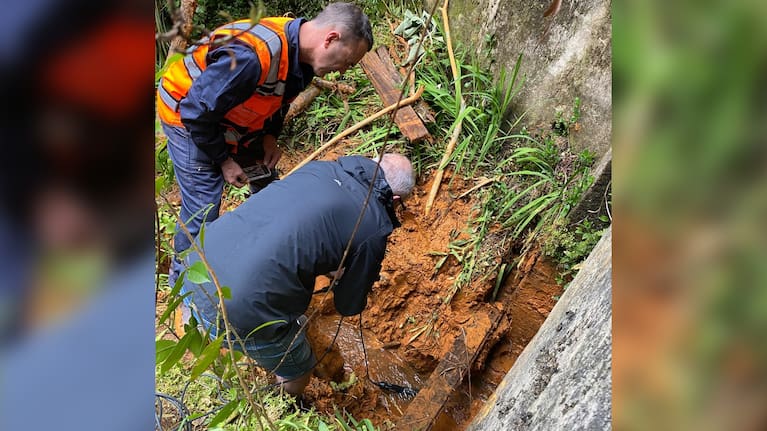The preliminary results from discharged sediment samples taken after the Ohinemuri River turned bright orange last week show “elevated” levels of arsenic, according to the Waikato Regional Council.
The levels present are within drinking water and ecological protection guidelines for fresh water.
The discolouration, which appeared to enter the river downstream of the Waitawheta River, was reported to the council on Friday last week, prompting a public warning to treat discoloured river water as contaminated.
Council staff initially took samples of the settled sediment from upstream and downstream, which it said could include substances commonly found in old mine assets including arsenic, cadmium, chromium, cyanide and antimony.
In an update this morning, Waikato Regional Council regional compliance manager Patrick Lynch told Breakfast they were back at the site yesterday where there was “a heck of a lot of sediment suspended directly in front of the mine”.
“That is slowly being released slowly into the stream and into the river, so we haven’t seen the end of the orange plume. [We] will keep seeing it for some time as all that material makes its way out into the river.”
Waikato Regional Council environmental chemist Jonathan Caldwell said the preliminary results were “taken from the stream directly below the mine outlet, not in the main stem of the river”.
He said the council had begun to receive preliminary results from testing conducted on Friday.
“The results indicate that arsenic is very elevated. The lab does two types of tests, one on the total sample which includes the sediments as well as what is dissolved in the water.
“But what indicates risk to humans or to fish that might absorb that arsenic is what is called the dissolved fraction, which shows low levels of arsenic, below drinking water standards and below freshwater protection guidelines,” he said.
He said the elevated arsenic levels in the orange sediment would be “bound up” in the iron, which is what gives it the bright orange colour.
“They will not pose a short-term risk, but as those sediments drop down onto the riverbed and further downstream could provide risk later on as that arsenic may redissolve out into that water column.
“It would only be where people are drinking that water without it being treated, so water supply systems and providers will treat that water. The sediments are easy to remove so it won’t pose a risk to drinking water.”
Caldwell said the council still advised people to stay out of the water until it had received further results, saying it was a “positive” that no cyanide had yet been detected.
“For context, there are about 33 different metals that are analysed in these samples, and we’ve only had preliminary results for some of those.”

The council said in a media release this morning it is testing for 33 heavy metals and only has half of the results to date. It said so far, results show there are also elevated levels of copper and zinc, similar to what could be seen in urban storm water.
“It’s quite obvious that a lot of people have been coming out here and entering the mine,” Lynch said.
“This area is very hazardous, and we’ve asked the Department of Conservation as the landowner to consider some specific signage about entering the mine and perhaps securing the front of the mine shaft,” he said.
Lynch told Breakfast there’s “absolutely nothing” that could be done to prevent those sediments from coming out into the river after a slow build up of sediment in the mine shaft.
“As there are more rain events, it’s just going to keep washing down. So one of the key messages is that people can expect to see more orange plumes. Stay out of the orange stuff, stay away from that orange sediment.”
Lynch said in the media release there was no evidence to suggest the buildup of sediment was due to a man-made structure and it appeared the water leaving the mine was cutting its own natural channel.
The council expected results regarding downstream samples in the main stem of the Ohinemuri River today, which would provide a “fuller picture” of the potential effects.









